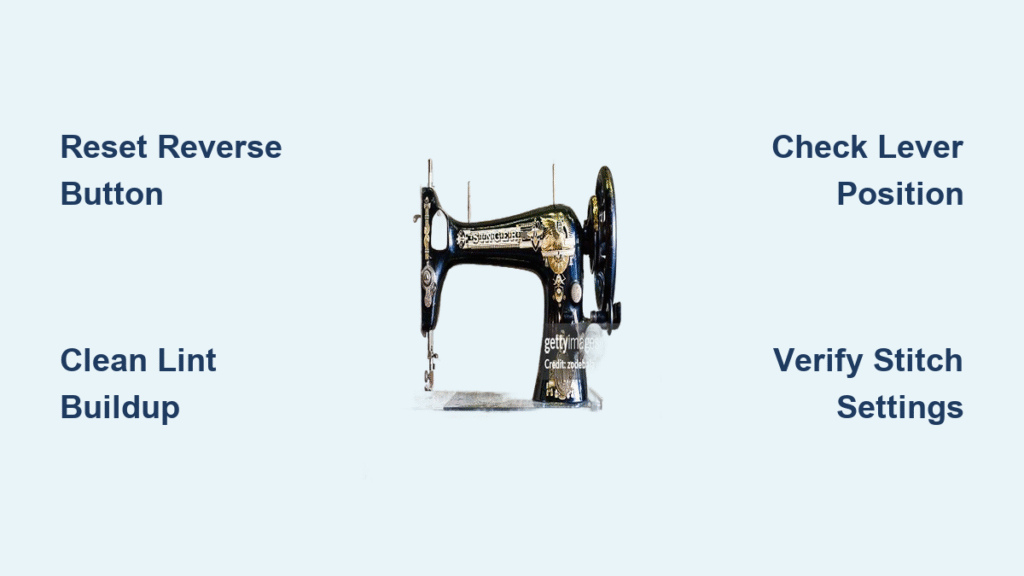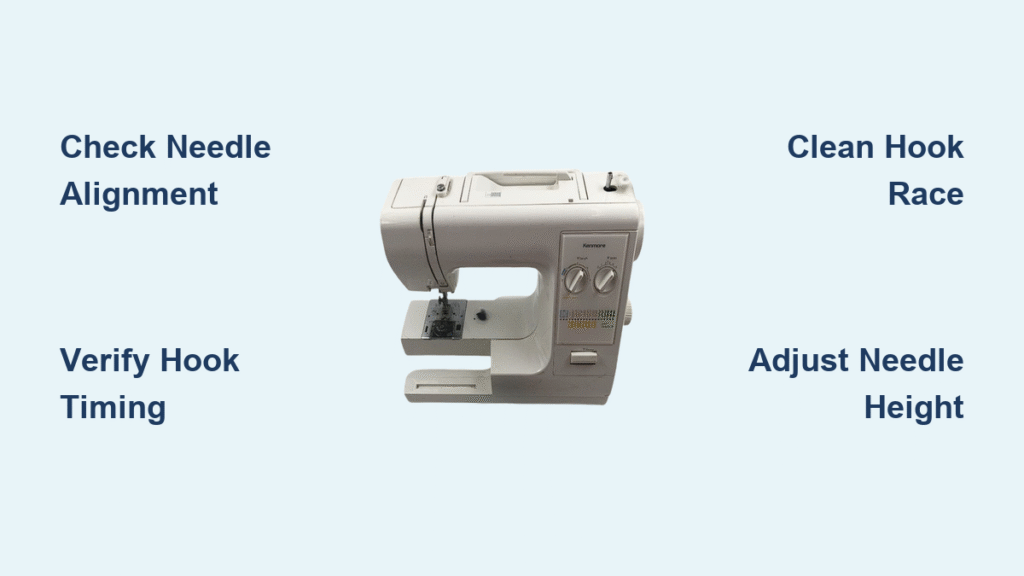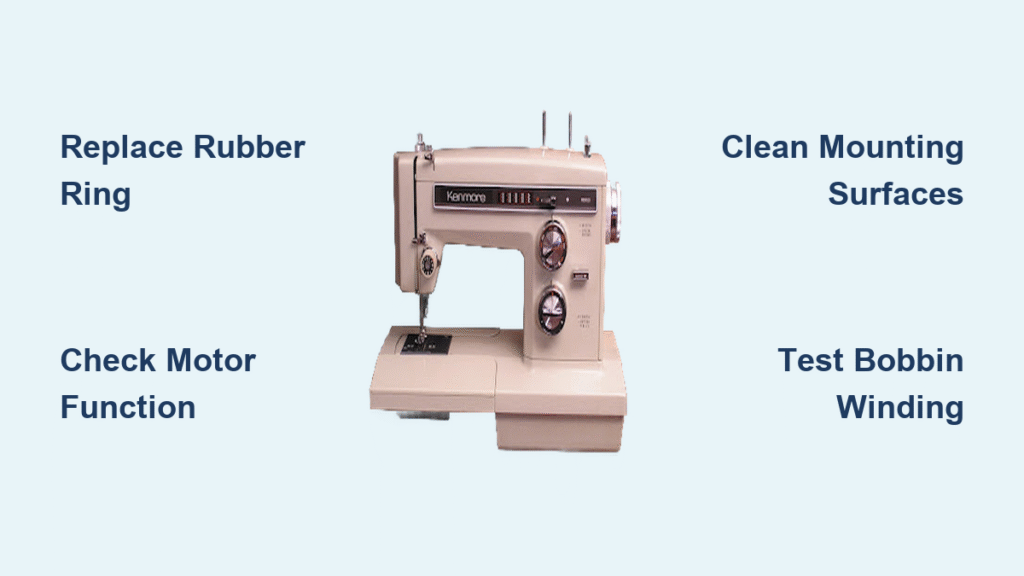Your Singer machine suddenly only sews backward—no matter how you adjust the lever or button. That frustrating “thunk-thunk-thunk” as fabric marches away from you instead of toward you can derail hours of work in seconds. Whether you’re mid-quilt or hemming curtains, this guide delivers proven fixes for any Singer model stuck in reverse. You’ll diagnose the culprit in under 60 seconds and likely restore forward sewing in 30 minutes—no service call needed. Stop tearing out threads and let’s get your machine moving forward again.
Why Your Singer Suddenly Only Sews Backward
This reverse-sewing nightmare usually stems from three silent saboteurs: lint buildup, dried lubricant, or misaligned settings. Most Singer owners panic when their machine defies control, but 90% of cases stem from simple issues you can fix yourself. The critical first step? Confirm whether your machine is truly stuck in reverse or tricked by hidden settings. Many sewers waste hours disassembling gears only to discover a half-pressed buttonhole lever or negative stitch length setting. We’ll cut through the confusion with targeted diagnostics before you touch a screwdriver.
M3220 Button Stuck Down? Reset in 8 Seconds
Electronic Glitch Emergency Fix
When your M3220’s reverse button won’t pop up, skip disassembly and try this factory reset sequence first. Hold the reverse button down for exactly 8 seconds—count slowly—then release sharply. Power off completely, unplug for 30 minutes, and press the power button once while disconnected to drain residual charge. This resets the control board without voiding your warranty. Reconnect and test: if the button springs back freely, you’ve just saved a $150 service call. If it sticks again, lint is likely jamming the mechanism.
Bobbin Area Lint Removal Protocol
Never lubricate without cleaning first. With power off, remove the needle plate, bobbin, and case. Shine a flashlight into the shuttle race while working the reverse button. If you see white fluff clinging to the lever slot, dip tweezers in isopropyl alcohol to extract threads. Critical step: Brush lint from the button’s spring compartment using a dry artist’s brush—compressed air risks pushing debris deeper. Only after thorough cleaning apply one drop of sewing machine oil to the shuttle center, then turn the hand-wheel 15 times to distribute lubricant. Reassemble and test immediately.
6212 & 4411 Lever Restoration Tactics

Lever Feels Gritty? Heat and Oil Method
If your mechanical lever (like on the 6212 or 4411) drags or won’t snap up, dried oil is the culprit. Apply warm air from a hair dryer on low heat for 90 seconds directly onto the lever base—this softens congealed lubricant without melting plastic. Immediately work the lever up/down 20 times to restore movement. If resistance remains, tip the machine back and remove the base plate screws. Locate the metal linkage connecting the lever to the feed-dog cam. Dip a Q-tip in isopropyl alcohol (not WD-40—it attracts dust long-term) and scrub pivot points until shiny. Wipe dry, apply one drop of clear sewing machine oil, and actuate 30 times before reassembly.
Hidden Lever Position Check
Your lever may appear “up” but isn’t fully engaged. For the 4411’s side lever or 6212’s front lever, press it upward with firm thumb pressure until you hear a distinct click. Many sewers miss this half-engaged state after rethreading. Verify by watching the feed dogs: with lever up, they should move toward the machine’s rear when turning the hand-wheel forward. If movement stays reversed, proceed to internal linkage cleaning—never force the lever.
Buttonhole Lever Traps That Force Reverse Sewing

30-Second Stitch Selector Rescue
This hidden culprit fools 70% of Singer owners. Even with the reverse lever up, a partially dropped buttonhole lever locks your machine into reverse feed. Locate the small tab near your stitch selector (often labeled “BH”) and push it firmly upward until it clicks. Simultaneously, confirm two critical settings: your stitch selector must show straight stitch (mode 01)—not buttonhole or stretch stitch—and the stitch length dial reads 2.5mm (positive number). Many modern Singers like the HD 6380 M automatically engage reverse if stitch length hits “0” or negative values. Adjust both, then test on scrap fabric.
Stretch Stitch Mode Emergency Exit
On older mechanical models like the 6212, selecting stretch stitches (often marked with lightning bolts) can hijack forward motion. Rotate the stitch dial to position 01 (straight stitch), then turn the stitch length dial to 2.5mm. If your machine still sews backward, check for a secondary “stretch” button near the needle threader—press it once to disengage. Never attempt repairs while these modes are active; they override all reverse controls.
Feed Dog Cam Jam: Thread Snarl Emergency Removal
Step-by-Step Cam Clearance
When feed dogs visibly march toward you (reverse motion), a thread snarl has seized the direction cam. Remove the needle and presser foot first—safety is non-negotiable. Take off the needle plate and bobbin case to expose the feed mechanism. Now, turn the hand-wheel backward (toward you) while rapidly pressing the reverse lever. Watch for a small metal cam or sliding bar near the feed dogs. If threads are wrapped around it, use pointed tweezers to unwind them—never pull, as this can bend delicate parts. After clearing, add one drop of oil to the cam’s pivot points and cycle the lever 20 times.
Critical Visual Cues During Diagnosis
As you turn the hand-wheel, observe the cam’s movement: it should slide smoothly between forward and reverse positions. If it sticks at the midpoint or moves jerkily, congealed oil remains. Apply heat with a hair dryer for 60 seconds, then repeat the cycling process. If the cam doesn’t move at all when lever is actuated, internal gears may be damaged—stop immediately and contact Singer.
Pedal vs Machine Fault Isolation Test
Proven Pedal Diagnosis in 3 Steps
Your foot pedal could be the silent villain. Unplug it completely and turn the hand-wheel manually. If feed dogs now move forward (toward the rear), the pedal is faulty. To confirm, spray electrical contact cleaner into the pedal’s plug socket, then work the pedal 30 times to dislodge grime. If unavailable, test with a borrowed compatible pedal—Singer models often share plugs across generations. Warning: Never submerge pedals in cleaner; moisture causes permanent damage. If cleaning fails, replace the pedal ($15-$30 online).
When Hand-Wheel Motion Confirms Machine Failure
If manual hand-wheel rotation also produces reverse feed, the problem lives inside your machine. This eliminates pedal issues and points to internal mechanisms. Note whether the reverse lever feels disconnected or moves freely without engaging gears—this indicates broken linkages. Proceed to model-specific cleaning protocols, but never open gear cases on machines under warranty. Singer voids coverage for user-initiated internal repairs.
Model-Specific Emergency Fixes Cheat Sheet
| Singer Model | Reverse Control Type | Most Likely Culprit | 90-Second Fix |
|---|---|---|---|
| M3220 | Electronic button | Lint under button + electronic glitch | Hold button 8 sec + soft reset |
| 6212 | Front mechanical lever | Dried oil in linkage | Warm lever 90 sec + oil pivot |
| 4411 | Side lever | Lever not fully engaged | Push lever up until click |
| HD 6380 M | Lever + dial combo | Buttonhole lever half-dropped | Set dial to 3 + lever up |
Pro Tip: For the HD 6380 M, verify the stitch length dial isn’t accidentally set to negative values—this model reverses feed even with lever up. Rotate dial to “3” and hold the reverse button for 5 seconds to reset electronics.
Temporary Work-Around: Sew Forward While Machine Runs Reverse
Reverse Sewing Technique for Urgent Projects
Can’t wait for repairs? Pivot your fabric instead of fighting the machine. Sew 3-4 forward stitches normally. Stop with the needle down in the fabric, then lift the presser foot. Rotate your fabric 180 degrees while keeping the needle embedded. Lower the presser foot and sew 3-4 more stitches—this becomes your back-tack. Pivot fabric back to original position and continue sewing. Critical limitation: This only works for straight and zig-zag stitches; decorative patterns will mirror incorrectly. Never use this method for precise seam alignment.
Prevention Protocol: Stop Reverse Issues Before They Start
Monthly Lint Defense Routine
Clean your bobbin area every 8 hours of sewing—not just when problems arise. Remove the plate and use a small brush (a clean toothbrush works) to dislodge lint from the shuttle race. Pay special attention to the reverse lever slot; trapped fibers here cause 40% of sudden reversals. NEVER use compressed air—it forces lint into gear housings. After cleaning, apply one drop of sewing machine oil to the shuttle race and turn the hand-wheel 10 times to distribute.
Lubrication Landmines to Avoid
Household oils like WD-40 or 3-in-1 are sabotage. They gum up quickly and attract lint. Use only clear sewing machine oil (Singer-brand or Zoom Spout) on mechanical linkages every 6 months. Apply one microscopic drop to the reverse lever pivot and feed-dog cam—excess oil attracts dust. Wipe away any overflow with a microfiber cloth. If you accidentally used WD-40, clean thoroughly with isopropyl alcohol before re-oiling.
When to Call Singer: Warranty-Safe Service Triggers
Contact Singer immediately at 1-800-4-SINGER (474-6437) if:
– Your machine is under 1 year warranty
– The feed-dog cam appears cracked during inspection
– The reverse lever feels completely disconnected (no resistance)
– You smell burning plastic or see smoke
Never open gear cases yourself on new machines. Singer’s warranty explicitly voids coverage for user-initiated internal repairs. For out-of-warranty machines with suspected gear damage, use their Service Center Locator to find certified technicians. Describe your diagnostics (“feed dogs reverse with lever up, cam immobile”) to avoid unnecessary disassembly fees.
Final Takeaway: Your Singer’s reverse-sewing crisis is almost certainly a quick fix—not a death sentence. Start with the 90-second model-specific checks, then attack lint and dried oil in the lever mechanism. With these proven tactics, you’ll conquer 90% of reverse-feed failures before lunch. Remember: Singer machines thrive on simple maintenance, not magic. Clean regularly, oil sparingly, and never fear the hand-wheel test. Your forward sewing awaits.




